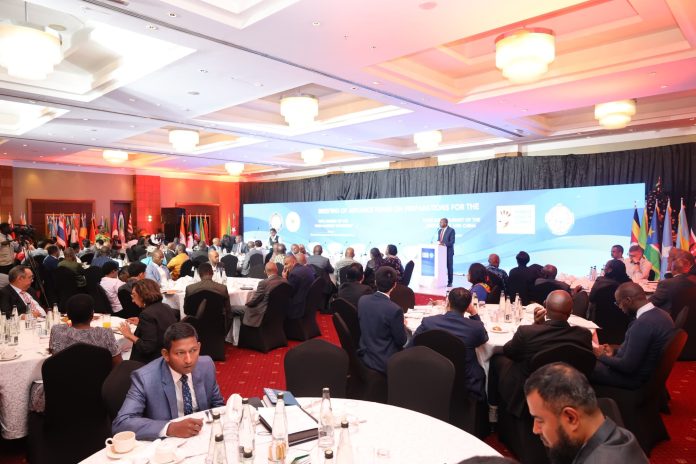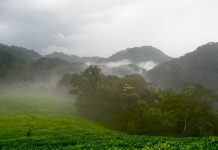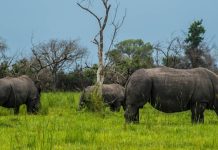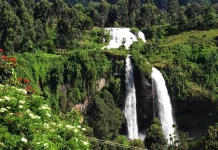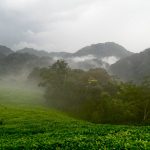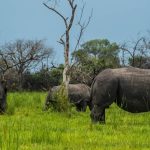The Member States of the Non-Aligned Movement NAM and G77 unanimously chose Uganda to host the 19th Summit of the Heads of State and Government. This decision was made on January 21, 2020 and scheduled to take place from January 15th to 20th, 2024, at Speke Resort & Convention Center in Munyonyo.
This summit serves as a platform for leaders to deliberate on crucial global issues, share insights, and collaborate. The guidelines aim to provide essential information, ensuring that participants are well-prepared for the proceedings. From logistics to security measures, the details are designed to facilitate a seamless experience for all attendees.
Uganda, in taking up the responsibility to host the 19th NAM Summit, reaffirms its dedication to the principles of the Non-Aligned Movement. By bringing together leaders from diverse backgrounds, the summit presents an opportunity to strengthen the bonds of solidarity and cooperation that lie at the core of NAM’s values.
The Non-Aligned Movement (NAM) and the Group of 77 (G77) summit stand as pillars of collaboration, uniting nations in their pursuit of a more equitable and just world order. These gatherings provide a platform for developing countries to voice their concerns, share experiences, and strategize on collective action.
Uganda’s journey in NAM

In 1964, just two years after gaining independence from the British, Uganda joined the Non-Aligned Movement (NAM) second summit which took place in Cairo, Egypt and 47 countries gathered. Uganda was on board and became an active player in a movement that stood for the Bandung Principles.
Uganda joined NAM by following Bandung Principles which included the idea of not picking sides in the Cold War, focusing on peace, and working together for development. Since then, Uganda has been a loyal member, actively participating in the movement’s goals.
Uganda’s membership in NAM has now lasted for 27 years as the principles move hand in hand with the 1995 Constitution laws which include; respecting international laws and treaties, being all about peaceful coexistence and not picking sides, solving problems with other countries peacefully and standing against any form of domination, racism, and other bad stuff.
History of NAM and G77
Non-Aligned Movement (NAM)

In 1955, the first big gathering of Asian and African nations was held in Bandung, Indonesia. They came together to talk about peace and development, at a time when many African nations were still under colonial rule. This became known as the Bandung Conference.
This happened when the world was caught up in the Cold War,a difficult time between big powers. But the countries at Bandung didn’t want to pick sides. Instead, they wanted to focus on their own independence struggles and economic growth.
In 1961, the Non-Aligned Movement (NAM) was officially introduced in Belgrade, Yugoslavia. At the first summit, 25 countries showed up, including India, Egypt, and Cuba. They all shared a common goal and did not take sides in the Cold War and worked together for their own development.
NAM doesn’t have a charter or a permanent office but the chairmanship of the Movement changes hands, and the hosting country takes care of things which makes NAM unique.
Initially, NAM was all about political stuff, following the Bandung Principles. NAM’s core principles include respect for the sovereignty and territorial integrity of nations, non-interference in the internal affairs of member states, and the promotion of global peace and security. But as time went on, they also got into economic cooperation and social issues. The movement plays a crucial role in addressing contemporary challenges such as poverty, inequality, and climate change by fostering dialogue and cooperation among its diverse member nations. They were like a club of nations looking out for each other.
One of NAM’s big strengths is speaking up for global peace. They’ve been loud advocates for getting rid of nuclear weapons, fighting terrorism, and supporting the United Nations in keeping the peace. When COVID-19 hit, NAM stepped up too, helping the world recover. Today, NAM has grown into a formidable coalition of 120 member states, making it one of the largest groupings of countries in the world.
Group of 77 (G77) Summit

The Group of 77 was established in 1964 within the United Nations. G77 is a coalition of developing nations aimed at promoting economic cooperation and collectively addressing the challenges faced by its members. The G77 represents the interests of over two-thirds of the UN’s member states and is a vital force in shaping international economic policies.
Among the G77’s missions is the pursuit of economic development, social progress, and poverty eradication. The summit provides a platform for member states to articulate their common goals, share best practices, and formulate strategies for achieving sustainable development. This is done by fostering solidarity among developing nations, the G77 empowers its members to negotiate more effectively on the global stage, ensuring that the voices of the marginalized are heard and respected.
Common Objectives of NAM and G77
Both NAM and the G77 share common objectives rooted in the principles of equality, justice, and mutual respect. These forums serve as arenas for diplomatic discourse, allowing nations to collaborate on issues ranging from economic development to human rights.
By promoting a united front, NAM and the G77 amplify the influence of developing nations, challenging the existing power dynamics in the international arena.
As the world looks towards Uganda in January 2024, the spotlight will be on the country not just as a gracious host but as a beacon of diplomacy and collaboration. The 19th NAM Summit promises to be a milestone event, where nations unite under the banner of non-alignment to address the challenges and opportunities of our interconnected world. It is an occasion for Uganda to shine on the global stage and contribute to the ongoing narrative of international cooperation and shared progress.
Activities to be done after the NAM and G77 summit
